This post may contain affiliate links. If you make a purchase through a link, I may receive a small commission, at no cost to you. These commissions help keep this website up and running, and I thank you for your support. Read my full disclosure here.
Transylvania is a truly amazing place to visit. It is well known for its Carpathian mountains, magical castles, traditional way of life and tales of bloodthirsty vampires. Travelling to a foreign country is always a challenge, especially when they speak a different language, but taking the time to prepare and plan for your trip will ensure that it runs smoothly.
Following my own trip around Transylvania, I’ve put together these tips for a stress-free Transylvanian holiday.
Where Is Transylvania, Romania?
Romania is member of the European Union (EU) and is located in Southeastern Europe. It borders the Black Sea between Bulgaria and Ukraine and also borders Hungary, Serbia and Moldova.
Transylvania is located in the central part of Romania. The Carpathian Mountains run through Transylvania.
Weather
Transylvanian summers are hot, with temperatures up to 37ºC (100ºF). If you can’t handle the heat, then visit either in spring or autumn. Spring is a very popular time to visit Transylvania because of the spectacular wildflower meadows. In winter it can be very cold with heavy snow. Temperatures are usually cooler in the mountains.
Language
Romanian is the official language. As it is a Romance language, it has a lot in common with French, Italian, Spanish and Portuguese. Hungarian is used in some cities of Eastern Transylvania such as Miercurea-Ciuc, Târgu-Mureş, Oradea, Cluj-Napoca, Satu-Mare and in the Covasna and Harghita counties. There is also a small population of native German speakers in Romania.
Restaurants usually have English menus and staff typically speak English, however, I always recommend trying to learn some of the local language by using a Romanian English dictionary downloading a Romanian dictionary app (this definitely helps when ordering in a restaurant). Here are some of the basics to get you started:
| ENGLISH | ROMÂNĂ | PRONUNCIATION |
| Yes
No Hello/Good day Goodbye My name is What is your name? Do you speak English? Please speak slowly I’m sorry Good / Very good Thank you You’re welcome I would like Excuse me Men Women Toilet |
Da
Nu Bună ziua La revedere Numele meu este Cum vă numiţi? Vorbiţi englezeşte? Vă rog, vorbiţi mai rar Îmi pare rău Bine / Foarte bine Mulţumesc Cu plăcere Aş vrea Scuzaţi-mă Bărbaţi Femei W.C. |
Da
Noo Boo-nuh zee-wa La rev-eh-de-ray Noo-me-le meu yes-te Koom vuh noo-mits? Vor-bits en-gle-zesh-te Vuh rog, vor-bits may rar Im pa-re rau Boon / Fwar-tay boo-na Mool-tsoo-mesk Mool-tsoo-mesk Osh vray-a Skoo-za-tsi ma Buhr-bats Feh-mey Ve-che |
Money
The currency in Romania is the leu, plural lei (pronounced lay), which is abbreviated as RON. It is subdivided into 100 bani. Polymer notes are used in currencies of 1, 5, 10, 50, 100 and 500 lei. 200 lei notes were added in 2006. Whilst travelling in Transylvania, I never received notes larger than 100 lei out of cash machines (ATM). In fact, the ATMs usually dispense a range of small notes, so if you withdraw a large amount of money, you will find yourself with quite a wad of cash. Cash machines are readily available at banks and shopping centres in cities and tourist towns, but may not be available in small villages.
The Romanian coins currently in circulation are 5, 10 and 50 bani. The Romanian coins are worth so little that I found them rather useless. In fact, I only occasionally received coins as change because most people just round up to the closest lei.
Most Romanian restaurants, hotels and shops accept euro, however, you usually get a better rate if you pay with lei. You should plan to travel with some lei, as smaller businesses and village stores may not accept euros or credit cards. In the tourist areas, there are plenty of authorised money exchange services called casa de schimb or birou de schimb valutar. If you are travelling from Hungary with forint, then be aware that not all money exchangers will accept and change it for you.
A cheap way to get lei for your trip is to use your debit card to withdraw cash from an ATM in Romania. Check that your card has a Maestro, MasterCard, Cirrus or Visa symbol on it and make sure that you advise your bank that you plan to use your debit card before departing on your holiday. Withdrawing money from an ATM usually gives you a good exchange rate, especially compared with the currency exchange counters. Your Bank will usually charge a small transaction fee (check with your Bank), so try and reduce the number of cash withdrawals that you make. Be aware that your bank may limit the amount that you can withdraw each day, so check your limit with them before you go. Also, make sure that you have a Chip and Pin debit/credit card before you travel, otherwise you may not be able to use it for purchases in Romania.
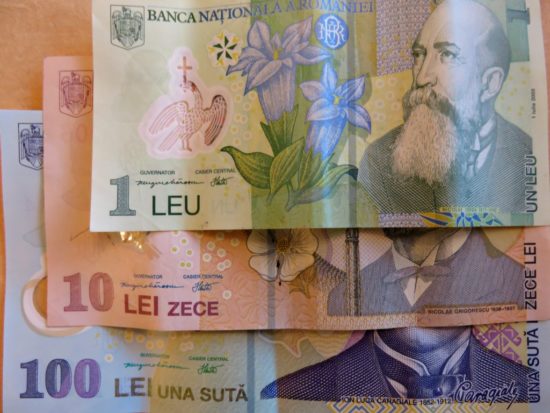
Electricity
Romania’s electrical current is 230V, and the electrical sockets take the standard continental European dual round-pronged plugs. If your appliances require 110V, then you will need to use a power converter. I used a worldwide adaptor that can be used in Romania as well as other countries. I prefer these universal ones because you can use them wherever you go. I especially like this particular plug because it’s got a built-in surge protector and has two USB ports so I can charge both my phone and tablet at the same time, whilst still using the main plug port. This allows me to travel with just the one adaptor, which I love as I’m always trying to travel as light as possible.
Toilets
There are public toilets available in Romania, but you typically need to pay for them. They usually cost about 1 leu (which is only a small amount). You’re usually allocated a small amount of toilet paper to use, so you should carry some toilet paper around with you. I find the pocket toilet tissue packs essential when travelling.
Free toilets are available at petrol/gas stations and shopping centres. These are typically modern buildings and are typically in good working order and clean.
Be aware that the toilet paper in public toilets is of a very inferior nature. It’s typically pink or yellow, and I think it’s been specially designed to fall apart in your hand. You’ve been warned!
Driving
Depending on what country you come from, driving around Transylvania can be a hair raising experience. Romanians drive on the right side of the road and pass on the left. Take caution on roads, as many people still get around using a horse and cart. The road conditions are usually good on major highways, but can get very rough on local unsealed roads. Romania has received a significant amount of funding from the EU to improve its roads, so they are steadily improving.
Unfortunately, passing lanes seem to be quite rare, even though many major roads in Romania are only single-lane. This results in drivers creating their own “third lane” directly down the centre of the road. You will frequently find yourself heading towards a line of cars driving down the middle of the road in an attempt to pass as much traffic as they possibly can before pulling back into their lane at what seems the very last minute. If you have ever heard of the driving game Chicken, then this is it.
As most drivers in Romania are very impatient, don’t expect people to politely give way when you’re trying to pull out of a car park (so try reversing into your park as it makes for an easier escape) or let you in when you’re trying to get onto a busy road. They just expect you to push your way out, so don’t expect them to wait on you, you need to drive quite assertively.
Expect lots of roundabouts in Romania. If you haven’t driven through these before, then you need to give way to your left and indicate as you exit the roundabout. You may also notice that many people in Romania drive over the speed limit. This is obviously illegal, and I did see a lot of traffic police pulling people over for this, so don’t assume that you will get away with it.
If you are planning to hire a car, then you will find that most cars are manual. If you prefer an automatic, be aware that they generally cost more to hire. Also, they don’t tend to have as many, so book early to ensure you get one.
Don’t let this advice put you off hiring a car and driving around Transylvania. Here are some top tips to help you navigate with ease:
- Use Google’s free Offline Maps, which allows you to access free maps for navigating that can be used offline i.e. you don’t need WIFI, data, or roaming to be able to use them. Follow this detailed guide on how to use Google’s Offline Maps. Even if you have a data plan in Romania, don’t rely on it in case you have trouble accessing the mobile networks.
- Using your phone as a GPS will drain your battery quickly, so use a portable battery charger, which you can use to charge your phone and any other USB chargeable devices.
- If you prefer a paper map, then purchase a Romanian road map before you go. At least it’s reliable and won’t run out of battery or malfunction like the electronic options!
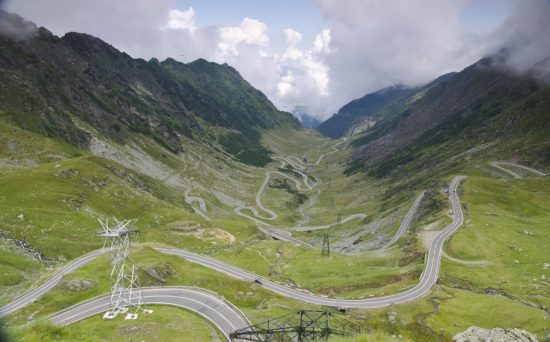
Planning on Driving the Transfăgărășan DN7C?
Due to weather conditions, the Transfăgărășan is only open from the beginning of July to the end of October. Because of this, the road becomes extremely busy during this tourist peak time. You will be rewarded with a much more peaceful drive if you stay overnight nearby then start out early.
Trains
You need to purchase local train tickets at the train station, either using a ticket machine or at the ticket booth. Domestic train tickets can also be purchased at the train station or booked up to 30 days in advance using the Romanian CFR Călători website. This website does provide the option to display in English.
At some of the smaller stations, it is not always clear which platform your train is departing from due to the absence of information screens and signage. If you’re unsure, just ask a staff member or a local.
What to Expect on Long-Haul Train Trips
The trains are typically quite old in Romania, so don’t expect a luxurious cabin. The cabin will come with a sink and only a shaver plug. Your electronics may struggle to charge using this power outlet, so don’t rely on it. The beds will be made up with a sheet, pillow and duvet. The upper bunk (or middle bunk in 3 bedroom cabins) can be folded down to create a back for the reasonably comfortable seat bench. The toilets and showers are shared, and unfortunately, no one seems to clean them during long journeys. Before you ask, yes, the toilets become disgusting by morning. Just make sure that you bring some toilet paper with you, as that will run out sometime during the night, usually about the same time that one of them gets blocked.
There are luggage storage facilities available in the main train stations, and they are very reasonably priced.
Travelling From Hungary to Transylvania by Train
You can buy your train tickets either at a train station in Hungary or using the Hungarian MÁV-START train ticketing website. The website is usually cheaper as it regularly offers discounted tickets. Don’t buy from third-party websites, as they will usually charge you double the normal ticket price.
The MÁV-START website has the option to display in English. It is not the easiest site to navigate, but with a little patience, you can get your train tickets booked. Tickets are only available up to two months in advance.
If you are on a tight budget and decide to book a seat, sometimes you can lie out across the seats if the train is not very full. Take food with you as there often isn’t a food cart to have a meal in.
If you are booking a sleeping cabin, be aware that the shared ‘couchettes’ are separated by gender. If you are a male or female who wants to travel together, then you will need to book a private cabin. There are typically 2 and 3 bedroom cabin options, but on some routes there may be no 2 bedroom cabins. In that case you will need to book an entire 3 bedroom cabin. Funnily enough, I found that the 3 bedroom cabins were usually cheaper than the 2 bedroom ones anyway so even if there are 2 bedroom ones available, check the price difference if you want to save money.
In order to complete your purchase, you will be prompted to register for an account. Once you have purchased your ticket, you will be given a code. THIS IS NOT YOUR TICKET! Before boarding your train, you need to take this code to one of the e-ticket printing machines. Follow the instructions on the screen (there will be an English option) and enter your code. Your tickets will then be printed out. Make sure that you allow enough time for printing your ticket at the train station.
If you are departing from the Budapest Keleti train station, then go to the e-ticket machines located at the extension of track 9 on the right of the main entrance and in the hall on the side of Kerepesi street. The ticket machines are located near the ticket desk to the right at the base of the stairs. The electronic displays at the top of the stairs are only for the regional trains travelling within Hungary. Once you print your tickets, go up the stairs and go to the left to get to the “International” platform. Once there, you will see the electronic train schedule for the trains leaving Hungary.
As you leave Hungary, the Border Guards will stop the train and carry out a passport check. Then, about an hour later, you will get to the Romanian Border where the guards will carry out another passport check. Unfortunately for those of you taking the overnight train, this will happen right after you have fallen off to sleep, so make sure that you have your passport handy.
Travelling by Bus
Bus tickets are very cheap in Romania. If you are on a tight budget, then plan and work out what bus you need to take to get to your accommodation on Google Maps.
Typically, you purchase your bus ticket at the bus ticketing booth located at each stop. Once you get on the bus, you need to validate it using one of the machines on the bus. If you are not planning to get on the bus at one of the main stops, then you will need to purchase extra tickets in advance as there may not be a ticket seller at the stop. Buses in the city areas usually come with WIFI, but as with most bus WIFI, it is usually pretty slow and patchy.
National Parks
The National Parks in Transylvania provide excellent hiking and rock climbing. To fund these amazing parks, some of them charge a small entry fee. Make sure that you refer to the Park website for information about where and how to purchase the pass if applicable. They usually need to be purchased in the nearby town.
When planning your hiking trails, use topographical maps to get an idea of its gradient and altitude so that you can choose a trail that suits your fitness levels. I used the Munţii Noștri app that provided excellent trail maps as well as satellite positioning.
It can become very hot in summer, so stay hydrated and bring enough water for the conditions. If you are hiking in the colder months, then be aware that it snows in the mountains and the weather can change very suddenly, so take enough warm clothing.
There is an array of wildlife in Transylvania, including wolves, lynx, and brown bears. If you are hiking, then consider carrying bear spray, not just for the bears, but also for the sheep dogs that guard the livestock that graze in the park meadows. These dogs are bred to guard against bears and wolves, so they mean business and wear spiked collars and move as a pack. There is usually a Shepherd nearby but they may not be able to intervene in time.
Did You Know?
Romania has one of the largest areas of undisturbed forest in Europe covering almost 27% of its territory.
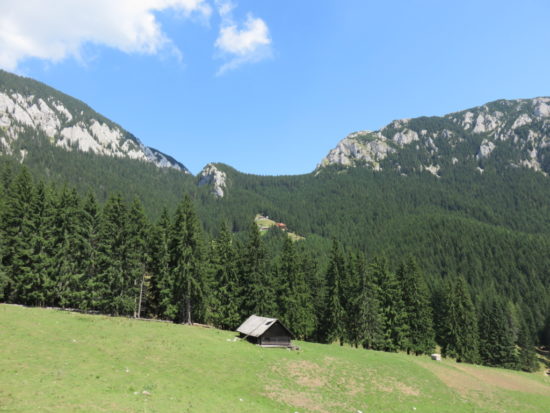
Romanian Food
It can be tempting to eat food that is familiar to you when you’re travelling, especially as this is usually what’s served in the tourist area restaurants. But travelling is all about experiencing new things and getting outside of your comfort zone. Get off the beaten path and find a traditional Romanian restaurant. The food doesn’t always look or sound very attractive, but it really is delicious, comfort food. Popular dishes include stuffed cabbage rolls called sarmale, mămăligă polenta served with sour cream and mititei or mici, grilled minced meat shaped into sausages and paired with a local pint of beer (you’ll need it, they’re quite salty). Many of their dishes are served with sour cream, which they call smântână and tastes even better than the kind you get from the supermarket. In small towns, vegetarians and especially vegans may struggle to find something that meets their dietary requirements.
Romanians have a sweet tooth. Popular sweet dishes include Kurtoskalacs or chimney cakes which you will see cooked and sold on the street, and Gogosi, a donut filled with fruit or custard or simply sprinkled in icing sugar. If you’re strolling past one of the many delicious bakeries in Romania, then advantage of the booths that allow you to make impulse purchases. Other popular desserts include cakes, strudels and crepes.
Romania also has great wine and beer. It is one of Europe’s biggest wine producers and although their wines are aimed at the budget end of the market, there are some excellent wines being produced. Romania also has a good range of beer as well as local alcohol such as țuică, which is the general term for alcohol made from fermented fruit, commonly plums. Palincă, a double distilled plum brandy, is a popular drink and commonly home brewed by Romanians.
At restaurants, they don’t typically offer tap water. If you want water, they will expect you to purchase the very popular bottled Romanian mineral water. Many of these come from Transylvania and are naturally carbonated.
Recreate traditional Romanian dishes at home using this Taste of Romania recipe book.
Smoking
Smoking is still commonplace in Romania. The Romanian Government has put in place legislation that bans smoking in public places, including buses, trains, hospitals and theatres, but unfortunately, most smokers ignore these smoking bans.
General Tips
- Hot & cold tap confusion: Often, the water temperature is the opposite of what it indicates on the tap. Confusing, I know!
- Visiting Bran Castle? Visit on a weekday and early in the morning during the summer. Although it’s still busy, the weekdays are much quieter than the weekends.
- Expect a receipt for all goods and services purchased: The Government has a strict anti-corruption strategy in place whereby all customers must receive a receipt for goods and services paid for. You will see these signs advising customers of their rights everywhere, from your restaurant table to your guest house accommodation.
- Planning your trip: When I planned my trip around Transylvania, I also used Lonely Planet’s Romania travel guide. It provided me with clear, detailed guidance, as I found very little information online. You can also use my own itinerary in my post My Journey Through Spectacular Transylvania, to give you ideas and inspire you.

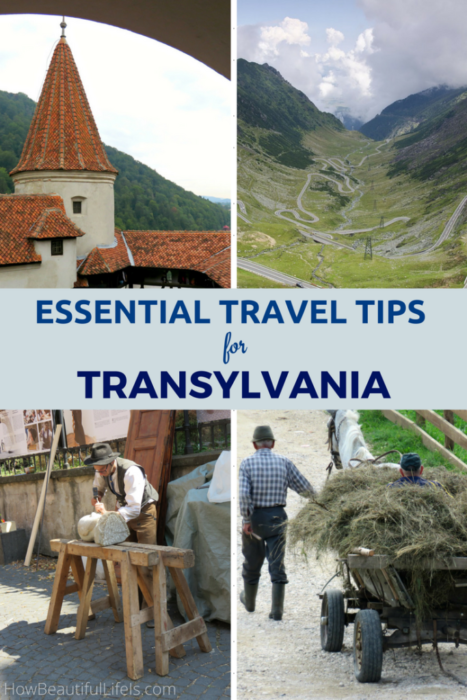
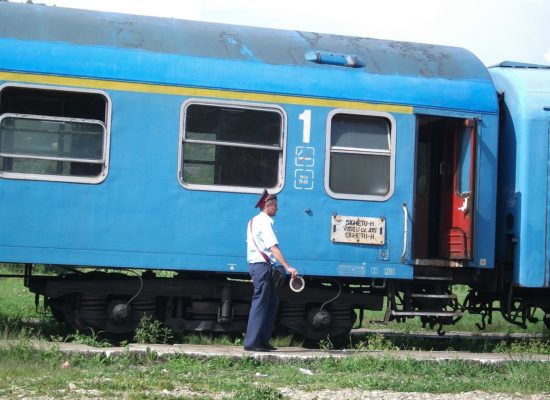
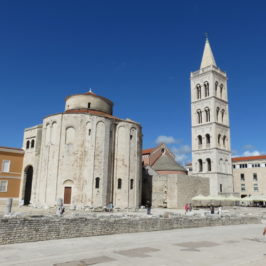
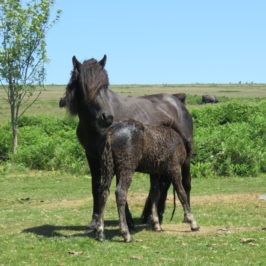
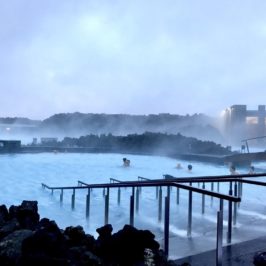


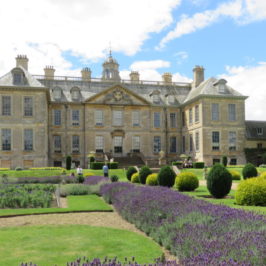
Leave a Reply